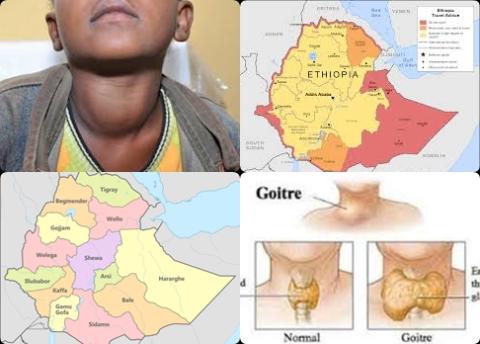
Objectives:
The distribution of goiter among children and its risk factors are not well investigated in Ethiopia. Therefore, this review article (meta-analysis) has been conducted.
The aim of this review article is to provide pooled prevalence of goiter and its associated factors among children in Ethiopia.
Study design:
This review article included 19 cross-sectional studies with a total sample of 10,253 children (aged 6-18 years).
All studies used palpation as the assessment method to diagnose goiter using the WHO/UNICEF/ICIDD criteria.
All studies reported high response rates (> 90%).
The quality score of included studies ranged from 6 to 7 with a mean score of 6.67 (SD = 0.42).
Both funnel plots of precision asymmetry and the Egger’s test of the intercept indicated the absence of publication bias in the included studies. Visual examination of the funnel plot showed a symmetric distribution of studies. Additionally, Egger’s test of the intercept was -0.004 [95% CI = - 0.3 to 0.3, p > 0.05], suggesting that publication bias estimates were not statistically significant.
Results and conclusions:
The investigators found pooled estimate of goiter among children in Ethiopia was 40.50% [95% CI = 33.6-47.40].
The regional distribution of goiter ranged from 44.22 [95% CI = 17.44-71] in Southern Nations Nationalities and Peoples' Region, to 32.79% [95% CI = 19.86-45.73] in Benishangul Gumez region.
No single study significantly affected the overall pooled estimate of goiter in the sensitivity analyses.
The investigators found the prevalence of goiter among female children (44.34%) was higher than among male (32.88%) children.
The investigators found goiter prevalence was also significantly higher among children who consumed vegetables 3 or more times per week OR = 1.3 [95% CI = 1.02-1.66]; those who had family history of goiter, OR = 2.38 [95% CI = 1.9-2.99] and those whose family stored salt near to fires, OR = 1.41 [95% CI = 1.1-1.79].
The investigators concluded that the prevalence of goiter among children in Ethiopia (aged 6-18 years) is high and that goiter may be endemic in the country according to WHO criteria. Goiter among children is significantly associated with consuming vegetables 3 or more times per week, the presence of family history of goiter and storing salt near a fire. These findings suggest that more attention should be given to strengthening the government’s national salt iodization program. Future research should investigate household-level factors that contribute to high goiter prevalence even when there is high coverage of adequately iodized salt. In particular, additional research on appropriate salt storage and the risks of consuming goitrogenic foods require more robust investigation.
Original title:
Prevalence of goiter among children in Ethiopia and associated factors: a systematic review and meta-analysis by Dessie G, Amare D, […], Burrowes S.
Link:
https://www.ncbi.nlm.nih.gov/pmc/articles/PMC6716873/
Additional information of El Mondo:
Find more information/studies on food fortification/malnutrition and iodine right here.
Iodine deficiency is the most common cause of thyroid enlargement and goiter. A goiter (GOI-tur) is an abnormal enlargement of the thyroid gland.